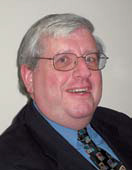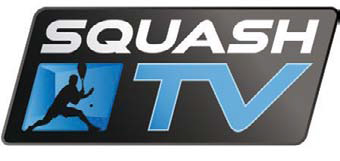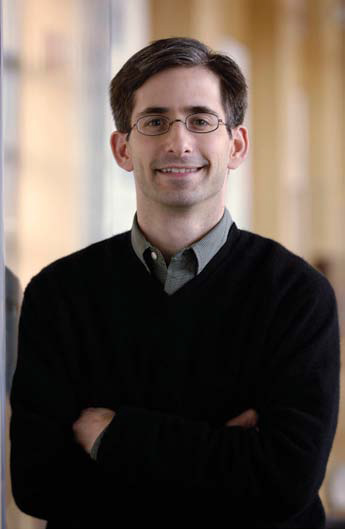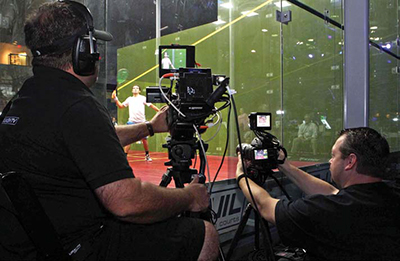Squash Anyone? Pick Your Platform

Gary Arlen
BETHESDA, MD.—If you missed the U.S. Open Squash Championship tournament in Philadelphia last month on “Squash TV,” the Professional Squash Association’s global real-time, paid, video-streaming service, you could see it on ESPN3.com provided you’re an authenticated ESPN subscriber.
If you knew where to look, you could also see parts of it on U.S. Open Squash’s website and some early tournament matches live and free via YouTube, which also archived reruns for on-demand viewing.
One World Sports, which distributes live events via linear satellite and cable channels, also carried the Open as part of its subscription package. Semifinal and final matches were telecast worldwide, often on ad-supported channels, via a satellite feed coordinated by Total Sports Asia, which up-linked from Philadelphia. The two weeks of squash matches were played on courts at Drexel University.
MULTIPLE CHOICE
That’s at least five platforms and three pricing structures to see the fast-paced events in both men’s and women’s tourneys, all fed from a single video production team run by British-based Perform Group.

Although none of the organizers or distributors has yet revealed the viewership or financial results of the two-week tournament, their tactics may offer a model for future distribution of esoteric content aimed at high-value audiences.
Kevin Klipstein, CEO of U.S. Squash, the sport’s governing body in the United States and organizer of October’s tournament, acknowledges that the audience may be limited, but the demographics are top notch. He estimates that there are about 1.2 million squash players in the United States, with an average annual income of $350,000 and average net worth of $1.5 million.
Get the TV Tech Newsletter
The professional video industry's #1 source for news, trends and product and tech information. Sign up below.

Kevin D. Klipstein That’s the target market for the digital distribution, and it’s the sales pitch program suppliers have been using as they seek sponsorships for the elite sport and its major events, such as the U.S. Open Squash Championships. Hence, no surprise; the primary sponsors are upscale financial firms.
The multiplatform approach represents an expansion strategy that could be duplicated in other categories beyond sports.
“Up to now we’ve been content with streaming,” Klipstein said. “Now we’re going after broadcast distribution deals for the next few years and build sponsorship packages.”
London-based PSA has contracted with OWS, a relatively young U.S. network that streams all PSA world series events in its Racquet Sports package. OWS currently has distribution deals in the United States with Dish, Cablevision’s Optimum TV and some MediaCom cable systems.
The company acknowledges that it has faced challenges with cable operators about where to place OWS. Operators favor putting it on an international tier or in multicultural bundles because of its focus on global content, while OWS wants to be in the sports tier.
One compromise, as evidenced in the U.S. Squash tournament: Cablevision’s Optimum TV service offers OWS as a standalone á là carte channel for $2.95 per month, a fee that included the squash matches.
ESPN3, the online-only streaming video channel for authenticated ESPN subscribers, also carried the tournament. It is part of the TV Everywhere initiative, even though the squash matches never made it to ESPN’s primary linear channels, apparently not even to the “Sports Center” highlights segment.
Squash TV, PSA’s official live and video-on-demand website, streamed the matches to its own subscribers and to affiliates, primarily local and regional squash organizations that operate their own websites. Squash TV charges the local equivalent of $13.99 per month (or $120 for an annual pass) to receive all its sanctioned events. Its online affiliates get a revenue share for members they bring to the video stream.
PSA has distribution partners worldwide (such as Fox Sports Australia) that carry the matches on major TV networks in regions where the sport is more popular than it is in the United States.
PRODUCTION: ONE FEED, MANY VARIATIONS
Perform Group, a London-based sports production company, handled all video capture, editing and transmission for the Philadelphia matches, including distribution to the multiple delivery platforms, under PSA auspices.
Marc Bousfield, a Perform producer/director, led a production team of seven people (two camera operators plus graphics, editing and other crew members) who handled every squash match from Philadelphia.
Two manned cameras covered the Center Court games, which were played in a Plexiglas cage, equipped with remote-controlled cameras, including aerial and floor-level angles to capture the speed of the games. Grandstands surrounded the glassed-in court on all sides. (Similar glassed-in courts were set up in New York’s Grand Central Station and other venues for previous U.S. Squash events.)

Production at the U.S. Open Squash Championship Earlier rounds were played on conventional courts at Drexel. The Perform team included slow-motion operators for replays that were available as part of the Center Court productions.
“We use the same crew for the global squash tour,” Bousfield said. The group includes commentators who can provide verbal coverage of the matches, although he pointed out that the free YouTube coverage was presented as single-camera video with no commentary.
He and Klipstein agree that the YouTube “test” was intended for real fans who want to see every match or follow specific players and would be satisfied with the static camera coverage.
“Squash carries the reputation of not being good on television,” Klipstein said. “It’s intense. I think we’re climbing our way into broadcasting. We’ve spent the last 24 months working to enhance the streaming and broadcast products. We’ve consulted with major national broadcasters on how to improve production.”
Klipstein cites advice, such as creating better floor lighting to improve the visual experience.
As for business factors, the squash tournament’s options of limited free access, subscription viewing and (in some locales) ad-supported broadcast delivery will provide valuable case studies in how audiences respond to the multiple options of digital delivery.
The options—from linear big-screen to wireless mobile viewing—will also provide guidance on how to proceed in squash television and other content. Thanks to the metrics capture that streaming media enables, PSA and its online colleagues will get an efficient gauge of who watches what and when.
Squash promoters hope they have a smash on their hands.
Gary Arlen is president of Arlen Communications LLC, a media/telecom research firm. He can be reached atGaryArlen@columnist.com.
Gary Arlen, a contributor to Broadcasting & Cable, NextTV and TV Tech, is known for his visionary insights into the convergence of media + telecom + content + technology. His perspectives on public/tech policy, marketing and audience measurement have added to the value of his research and analyses of emerging interactive and broadband services. Gary was founder/editor/publisher of Interactivity Report, TeleServices Report and other influential newsletters; he was the long-time “curmudgeon” columnist for Multichannel News as well as a regular contributor to AdMap, Washington Technology and Telecommunications Reports; Gary writes regularly about trends and media/marketing for the Consumer Technology Association's i3 magazine plus several blogs.

